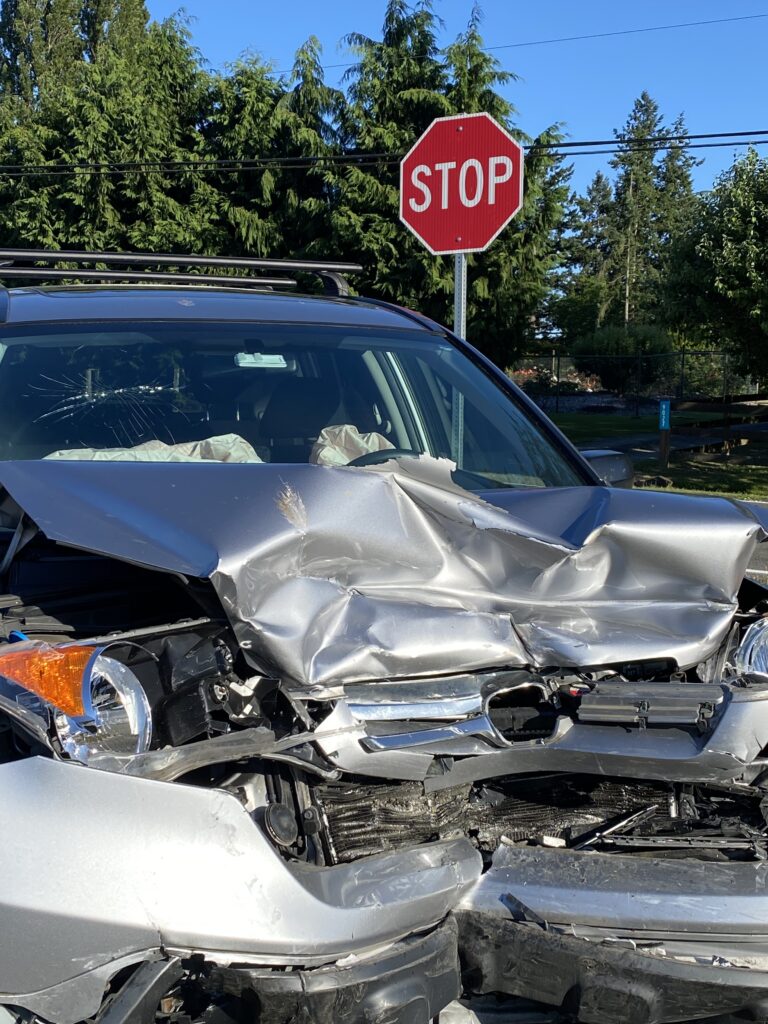Blowing through stop signs or, should any present themselves, red lights, yields tangible benefits. It increases fuel economy, saves a few seconds, fights global warming, and generally makes humdrum lives a little edgier.
Downsides include making everyone else’s lives a little edgier and slightly shorter in an actuarial sense, plus the fact that there are no on-Island accident repair shops. In any case, running stop signs is increasingly popular and it’s a hell of a bargain, practically free on the continuum of Washington State traffic infractions.
Looking up the codes, the maximum fine for these violations should not exceed the lesser of $48 or the cost of a local parking ticket. RCW 46.61.190 applies if you go straight on through, and RCW 46.61.055 applies if you make a “free right turn.” Under certain conditions, these fines can increase to $136 if you cause an accident or exhibit more exotic problems like driving under the influence. It’s a sort of Gateway Infraction.
If a vehicle doesn’t come to a full and complete stop in a forest, does it make less sound? Usually, yes! But let’s face it, there probably shouldn’t be any accident sounds at all on this Island other than falling into a ditch while trying to get a free chicken coop. Yet accidents happen, and U.S. auto insurance rates increased 16.9% in 2022, so here is The Loop’s multiple-choice pop quiz.
If you come onto a 4-way stop intersection when other vehicles are present, should you:
A. Notice that someone just answered your text and edge slowly through while reading and formulating a reply.
B. Wait for the driver with the right of way to turn their head away from you as they double-check traffic, then hit the throttle and jump into the intersection in front of them.
C. Calmly scroll through music-streaming choices for good songs and wait for someone to beep at you, safely indicating it’s your turn to go.
D. Watch the car in front of you intensely and stay right on its bumper as if they’re towing you, getting the drop on other drivers and saving up to a full 30 seconds of wait time.
E. Employ all of the above randomly.
The correct answer is choice “D,” as regularly performed in front of Minglement by a south-bound silver Honda Fit, sometimes with its left-hand turn signal still blinking.
By law and ancient custom, motorists arriving at a four-way stop must yield their right of way to any vehicles that arrived before, and wait their turn before entering the intersection. If each of the other three stop signs already has a vehicle waiting at it when you approach, it’s like showing up at the DMV and taking a numbered ticket – you are number four. If only two spots are filled, you are number three, and so on. If two or more vehicles arrive at the same time, the right-most has the “right” of way, and can proceed first.
To be honest, right of way is often more a choreography that is quickly complicated even in unincorporated areas like ours. There can be a lot going on at a four-way intersection. Long lines from schools and ferry commuters eager to get home; throw in a few pedestrians and bicyclists, and confusions arise. Eye contact, nods of assent, and hand signals are time-tested ways to keep out of trouble ever since Marco Polo pulled columns of spice-filled wagons across the Silk Road.
We don’t do so badly here in the context of the now nationally established “California Stop,” though we’re on the same upward trend. Even in the most hectic conditions, only about half of Vashonites fail to make full and complete stops. Whereas you can search YouTube for intersections near California elementary schools; only about 1 in 20 drivers will stop completely. They’re smooth criminals, these Cali drivers, lifelong experts at rolling through. We can’t hope to catch up to their level. It’s in their blood.
Because of advancing technologies like reliable sensors, emergency auto-braking, lane assist, and other driver aids, it may be that the importance of stop signs is waning, and is for practical purposes going extinct even here. Maybe the stop sign’s evolutionary niche is being taken over by what used to be the “yield” sign. So long as we maintain situational awareness and extend common courtesy, it’s possible to safely glide through our intersections at mild jogging speeds, stopping when appropriate and necessary. Great preparation for the roundabouts and traffic circles King County may one day put in.

